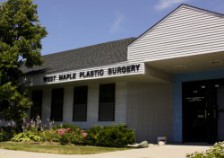
Surgical otoplasty has proven successful in correcting a wide range of the ear deformities, defects, injuries and congenital conditions.
Cleft earlobe – one of the most common reasons for seeking surgical otoplasty is to correct a cleft earlobe. This condition is characterized by an open notch at the top of the earlobe, usually caused from a growth deformity. While it rarely poses any risk to a person’s health or well-being, it can affect their quality of life, making them feel self-conscious about their image. A plastic surgeon can correct cleft earlobes, however, through surgical otoplasty.
Constricted ear – in cases of constricted ear, the shank of the helix protrudes out of the concha and into the helical rim. Depending on the severity of this condition, it can shift the cartilage of the ear around. Surgical otoplasty is used to correct cases of constricted ear, both minor and severe.

Cryptotia – this condition occurs when the rim of the helix remains hidden under the skin within the temporal region (scalp). In order to fix cryptotia, the plastic surgeon must make a small incision to expose the upper portion of the ear, followed by resurfacing the cartilage in the helical rim (usually done with a skin graft or flap). In some cases of cryptotia, the upper ear cartilage may also require surgical correction.
Scroll ear – this is a birth defect in which the outer portion of the ear curls inwards towards the individual’s head. Plastic otoplasty is highly effective in treating scroll ear by pulling the displaced cartilage back into its original position.
Darwinian ear – derived from the British biologist, Darwinian ear occurs when the cartilage at the conchal bowl remains flat. Normally, it folds inwards, but defects and injuries may cause it to remain flat; thus, resulting in the condition known as Darwinian ear.
 Skin cancer – it’s estimated that nearly one in five Americans will develop some form of skin cancer in their lifetime. While many people believe that skin cancer only develops directly on the body, the fact remains that it can also form on the ear. The good news is the surgical otoplasty can often be used to treat cases of skin cancer in which the cancerous cells form on the ear. The surgeon can remove affected cartilage, grafting it with additional tissue if necessary.
Skin cancer – it’s estimated that nearly one in five Americans will develop some form of skin cancer in their lifetime. While many people believe that skin cancer only develops directly on the body, the fact remains that it can also form on the ear. The good news is the surgical otoplasty can often be used to treat cases of skin cancer in which the cancerous cells form on the ear. The surgeon can remove affected cartilage, grafting it with additional tissue if necessary.
Lop ear – this condition is characterized by an abnormally small helix along with a large ear opening, creating the appearance of a cup-shaped ear. While otoplasty procedures vary on a case by case basis, most involve enlarging the helix while moving it closer to the individual’s head.


